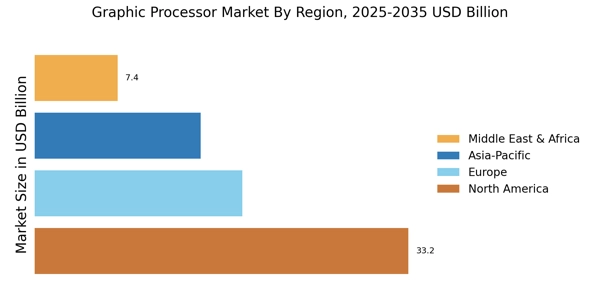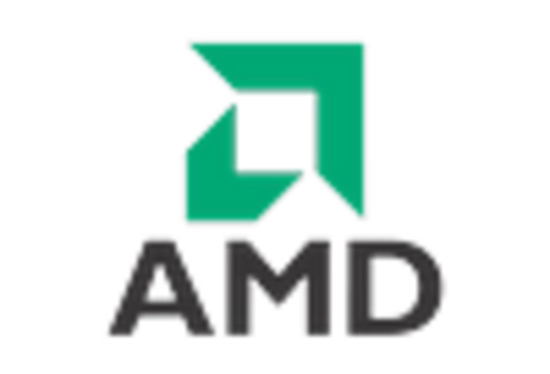Expansion of Gaming Industry
The Graphic Processor Market is closely tied to the expansion of the gaming industry, which continues to thrive as a major entertainment sector. With the increasing popularity of high-definition gaming and eSports, the demand for powerful graphic processors is on the rise. In 2025, the gaming market is projected to reach approximately 250 billion USD, with a substantial portion of this growth attributed to advancements in graphic processing technology. Gamers seek enhanced visual experiences, necessitating the development of more sophisticated graphic processors capable of handling complex graphics and real-time rendering. This trend not only fuels competition among manufacturers but also drives innovation within the Graphic Processor Market, as companies strive to meet the evolving demands of gamers.
Advancements in Graphics Technology
The Graphic Processor Market is propelled by continuous advancements in graphics technology, which enhance the performance and capabilities of graphic processors. Innovations such as ray tracing, real-time rendering, and improved memory architectures are transforming the landscape of graphic processing. These advancements not only improve visual fidelity but also optimize performance for a range of applications, from gaming to professional graphics work. As technology evolves, the market for graphic processors is expected to grow, with estimates suggesting a value of approximately 50 billion USD by 2025. This growth is indicative of the increasing reliance on high-quality graphics across various industries, further solidifying the importance of the Graphic Processor Market in the broader technology ecosystem.
Rise of Machine Learning and AI Applications
The Graphic Processor Market is witnessing a notable rise in the adoption of machine learning and artificial intelligence applications. These technologies require substantial computational power, which graphic processors are uniquely equipped to provide. As businesses increasingly implement AI-driven solutions for data analysis, predictive modeling, and automation, the demand for high-performance graphic processors is expected to grow. In 2025, the AI market is projected to reach around 190 billion USD, indicating a strong correlation with the Graphic Processor Market. The ability of graphic processors to perform parallel processing makes them ideal for training complex AI models, thereby enhancing their utility in various sectors, including finance, healthcare, and automotive.
Increasing Demand for High-Performance Computing
The Graphic Processor Market is experiencing a surge in demand for high-performance computing solutions. This demand is primarily driven by advancements in artificial intelligence, machine learning, and data analytics. As organizations increasingly rely on complex algorithms and large datasets, the need for powerful graphic processors becomes paramount. In 2025, the market for high-performance computing is projected to reach approximately 40 billion USD, indicating a robust growth trajectory. The integration of graphic processors in data centers and supercomputers enhances processing capabilities, enabling faster computations and improved efficiency. Consequently, this trend is likely to propel the Graphic Processor Market forward, as companies seek to leverage cutting-edge technology to maintain a competitive edge.
Growth of Virtual Reality and Augmented Reality Applications
The Graphic Processor Market is significantly influenced by the burgeoning applications of virtual reality (VR) and augmented reality (AR). As industries such as gaming, education, and healthcare increasingly adopt VR and AR technologies, the demand for advanced graphic processors escalates. In 2025, the VR and AR market is anticipated to surpass 200 billion USD, underscoring the critical role of graphic processors in delivering immersive experiences. These processors are essential for rendering high-quality graphics and ensuring smooth interactions within virtual environments. As the technology matures, the Graphic Processor Market is poised to benefit from the proliferation of VR and AR applications, driving innovation and investment in graphic processing technologies.

















Leave a Comment